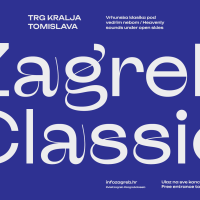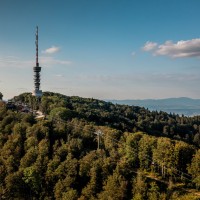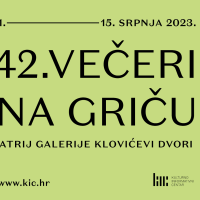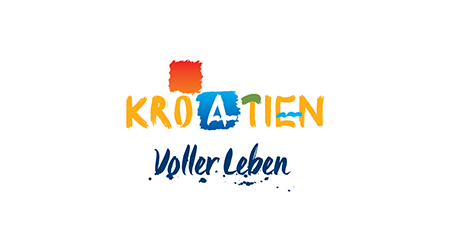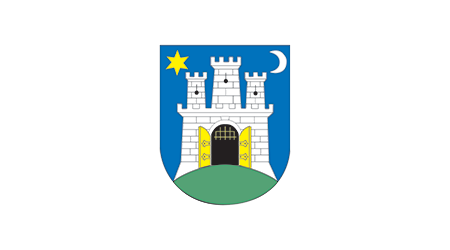New Tendencies and Richter's Pavilion
Two interesting exhibitions can be viewed at the Museum of Contemporary Art until the end of May. They mark the 50th anniversary of New Tendencies, one of the most important artistic movements in the region.
 Until the end of May, the Museum of Contemporary Art will present two concurrent exhibitions: “ARCHITECTURE FOR A BETTER WORLD – Vjenceslav Richter’s Yugoslav Pavilion at the Expo 58” and “FOR ACTIVE ART – New Tendencies 50 Years Later (1961–1973)”, by which it will be marking the 50th anniversary of New Tendencies. Both exhibitions remain open to the public until May 29th.
Until the end of May, the Museum of Contemporary Art will present two concurrent exhibitions: “ARCHITECTURE FOR A BETTER WORLD – Vjenceslav Richter’s Yugoslav Pavilion at the Expo 58” and “FOR ACTIVE ART – New Tendencies 50 Years Later (1961–1973)”, by which it will be marking the 50th anniversary of New Tendencies. Both exhibitions remain open to the public until May 29th.
The New Tendencies exhibition offers an insight into one of the most important regional artistic movements in the second half of the 20th century, and an interesting demonstration of the topicality of the artists' ideas. This large project not only celebrates an anniversary, but also provides a chronological overview. It shows the artistic importance of Zagreb and of what was then the City Gallery of Contemporary Art on the cultural map of Europe. On display to the general public are many period artworks that have never before been exhibited as a whole, under one roof, which is why this exhibition has generated a lot of excitement. One part of the exhibition is dedicated to the rich documentary and archival materials pertaining to the New Tendencies movement. Since it covers a broad range of topics, the exhibition is accompanied by a number of other concurrent events: discussion groups; lectures; the promotion of new editions of old works; and so on.
A special feature of the New Tendencies art is partly reflected in the application of what was then a brand-new technology – computers. A synergy between the two gave rise to a host of ideas that relied on the traditions of constructivism, neoplasticism and Bauhaus. While the New Tendencies movement thrived, local artists participated in five large projects; the concept of these five different “topics” is clearly represented by the current exhibition.
The exhibition “ARCHITECTURE FOR A BETTER WORLD – Vjenceslav Richter’s Yugoslav Pavilion at the Expo 58” is a selection of projects that were showcased at the Expo 1958 exhibition in Brussels. Vjenceslav Richter is a well-known architect, a versatile creator and the builder of a number of extravagant exhibition pavilions, including the one in Brussels. The selection made for this exhibition is themed around the role of propaganda exhibitions from the second half of the 40s to the mid-60s of last century in the promotion of cultural identities. It consists of several presentation levels: characteristic examples that document Richter's creative contribution to the topic; a separate part dedicated to the pavilion at the World Exhibition in Brussels in 1958, which includes a reconstruction of the exhibit; the contemporary contextualisation of Richter's activity in the area of exhibition architecture within its oeuvre; and the mapping of particular parts within the framework of modern architectural production, political environment and culture.
The choice of exhibits is based on the archival materials from the Museum's holdings, film archives (Croatian Television), photos, drawings, pavilion designs and exhibit details (from Horetzky Archive), as well as works on loan from the Modern Gallery in Zagreb, the Modern Gallery in Ljubljana, and the Museum of Modern and Contemporary Art in Rijeka.
Published: 31.05.2011
 Hrvatski
Hrvatski English
English Deutsch
Deutsch Spanish
Spanish French
French Italian
Italian Russian
Russian Korean
Korean Japanese
Japanese Chinese
Chinese Until the end of May, the Museum of Contemporary Art will present two concurrent exhibitions: “ARCHITECTURE FOR A BETTER WORLD – Vjenceslav Richter’s Yugoslav Pavilion at the Expo 58” and “FOR ACTIVE ART – New Tendencies 50 Years Later (1961–1973)”, by which it will be marking the 50th anniversary of New Tendencies. Both exhibitions remain open to the public until May 29th.
Until the end of May, the Museum of Contemporary Art will present two concurrent exhibitions: “ARCHITECTURE FOR A BETTER WORLD – Vjenceslav Richter’s Yugoslav Pavilion at the Expo 58” and “FOR ACTIVE ART – New Tendencies 50 Years Later (1961–1973)”, by which it will be marking the 50th anniversary of New Tendencies. Both exhibitions remain open to the public until May 29th.